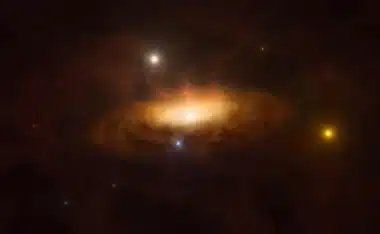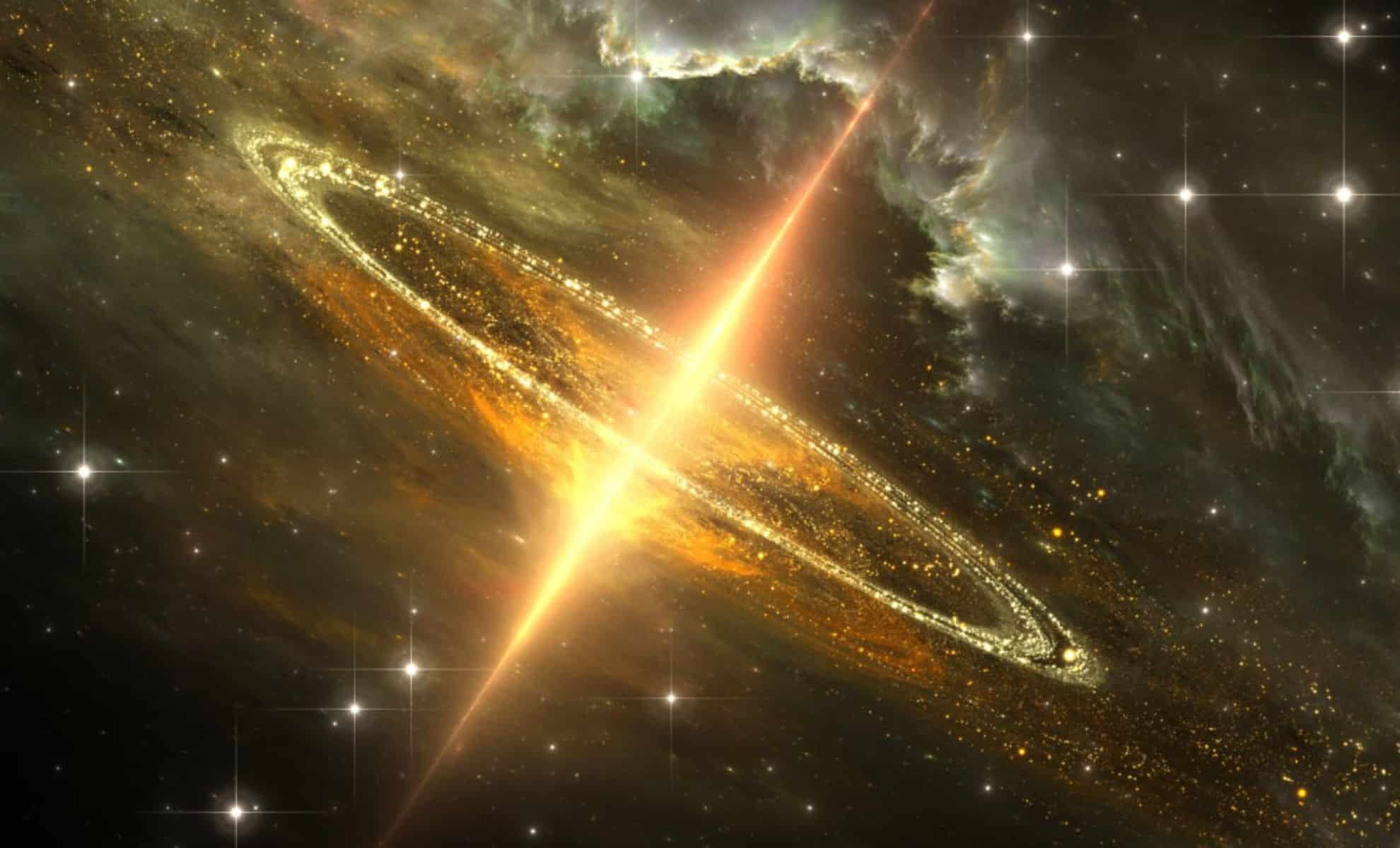Recent observations have revealed a fascinating phenomenon in the galaxy SDSS1335+0728, where a supermassive black hole at its center has begun to activate, causing unprecedented changes in brightness since December 2019.
This continued brightening provides a unique opportunity to study the transition from a quiescent state to an active galactic nucleus (AGN), shedding light on how these colossal black holes influence their host galaxies.
The unusual brightness of SDSS 1335+0728
Galaxy SDSS1335+0728located in the constellation Serpentarius, has been observed undergoing spectacular changes in brightness, probably due to the activation of its central part a supermassive black hole. This transformation was first observed by the Zwicky Transient Facility (ZTF) at Caltech’s Palomar Observatory. Unlike typical brightness changes caused by events such as supernova explosions or tidal disruptions, SDSS1335+0728 continued to brighten for more than four years, which suggests a more sustained process at work.
Observations from several telescopes, including the The European Southern Observatory’s Very Large Telescope (VLT) Observations in Chile have confirmed these changes. The galaxy is emitting more ultraviolet, optical, and infrared light, and more recently, X-rays. “We’ve found several million active galactic nuclei to date, and with the new generation of time-domain sky surveys like the ZTF, we’ve found about 700 that are changing their brightness significantly,” said Matthew Graham, a research professor of astronomy at Caltech and a ZTF project scientist. “But so far, we haven’t seen any galactic nuclei that are lighting up.”
The continued enlightenment of SDSS1335+0728 Real-time observation offers astronomers a rare and valuable opportunity to study the dynamic processes involved in the awakening of a supermassive black hole. By tracking changes in brightness and spectrum at different wavelengths, scientists can better understand the behavior of the black hole and its interaction with surrounding matter. This real-time observation is essential to understand the mechanisms that lead to the transition from a dormant to an active state in galactic nuclei.
Overview of active galactic nuclei
Activation of the a supermassive black hole in SDSS1335+0728 offers an unprecedented opportunity to observe a galaxy transitioning to an active state in real time. This process, where matter falls into the black hole and generates enormous amounts of energy, illuminates the surroundings of the black hole and can have a significant impact on the host galaxy. Ongoing observations help scientists understand the dynamics of such transformations and their effects on galactic evolution.
This awakening has led to an increase in emissions on different wavelengths, providing a comprehensive view of the phenomena associated with active galactic nucleiResearchers are particularly interested in how black hole activation influences the galaxy’s gas and star formation. Understanding these processes can provide insights into the life cycles of galaxies and the role that supermassive black holes play in their development.
Matthew Graham explained: “We expect most galaxies to go through a phase like this, because most of them have a supermassive black hole at their center. Further study of this galaxy will help us better understand this process and find other examples.” This underlines the importance of SDSS1335+0728 as a case study for the wider astronomical community. Knowledge gained from this galaxy can be applied to understand similar processes in other galaxies, improving our overall knowledge of galactic evolution and the role of black holes.
Observation techniques and challenges
The detailed study of SDSS1335+0728 The use of advanced observational techniques and instruments made these observations possible. The Zwicky Transient Facility, which detected the first changes in brightness, is designed to monitor the sky for transient events and changes in celestial objects. Its ability to monitor the sky continuously was crucial in capturing the early stages of the black hole’s activation.
In addition to the ZTF, the Very Large Telescope (VLT) in Chile has played an important role in providing high-resolution observations at multiple wavelengths. The VLT’s ability to observe in the ultraviolet, optical, infrared and X-ray spectra has allowed scientists to gain a comprehensive picture of the changes occurring in SDSS1335+0728. These observations are complemented by data from other telescopes around the world, creating a collaborative effort to study this unique event.

Despite these technological advances, the study active galactic nuclei Observing these galaxies presents several challenges. The considerable distance of these galaxies, combined with the complexity of the phenomena involved, requires precise and sustained observations. In addition, the variability of the luminosity and emissions of these galaxies adds an additional level of difficulty. Researchers must carefully analyze the data to distinguish between different possible causes observed changes and to construct accurate models of the underlying processes.
Future research directions and broader implications
The case of SDSS1335+0728 highlights the importance of continued monitoring and observation in astrophysics. Future studies will likely focus on comparing the behavior of this galaxy with other known active galactic nuclei to identify common patterns and differences. Such comparative analyses can help refine models of black hole activation and their impact on galactic environments.
“As far as we can tell, there’s nothing particularly unusual about this galaxy. We just observed it at a fairly unique time,” Graham said. “We expect most galaxies to go through a phase like this, because most of them have a supermassive black hole at their center. Further study of this galaxy will help us better understand this process and find other examples.”
Knowledge gained through observation The awakening of the black hole SDSS1335+0728 Observations of massive black holes can also shed light on our understanding of the large-scale structure of the universe. By studying how these massive black holes interact with their host galaxies, scientists can better understand the mechanisms that govern cosmic evolution and the formation of complex galactic systems. This research underscores the importance of advanced simulations and detailed observations in discover the hidden mechanisms who govern life galaxy cycles.
